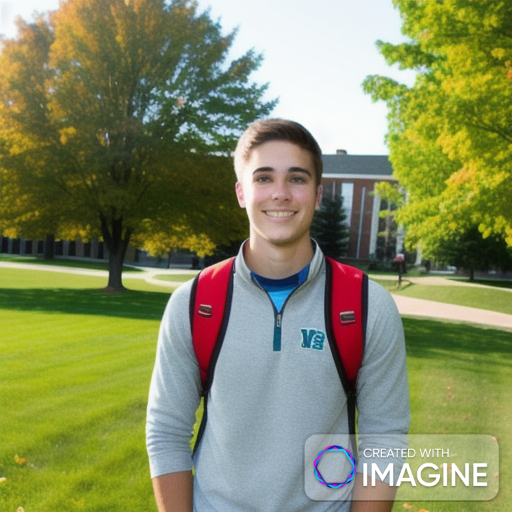
Jack Polatchek/jpolatchek@mail.smcvt.edu/Visual Editor
Update: On Oct. 26, an email was sent out by Associate Dean, Tim Mackin. In this email he noted that the student Code of Conduct had been updated for this academic year regarding the ethical use of AI. The additions reads, “Using cell phones and other electronic resources, any unauthorized notes during an exam, or use of artificial intelligence is prohibited unless the professor provides explicit permission.” Mackin noted in an email that, “The change was relatively minor. In most respects, use of AI is covered under the “unauthorized assistance” provision in the policy, but the plagiarism section originally read “using another person’s ideas as one’s own.” So I felt we needed to add language about AI to note that it’s not just a person’s words that count as plagiarism.” These changes were discussed and implicatred over the summer however the student Code of Conduct was not officially updated until Oct. 26. Mackin stressed that these are not new guidelines, but additional clirifying language on how students can ethically use Artifical Inteligence.
As the world hurtles into the digital age, one of the most transformative developments has been the integration of Artificial Intelligence (AI) into academia. Shaping the future of education and research, AI is not merely a tool but a catalyst for innovation, opening up new avenues for exploration and learning. From streamlining administrative tasks to revolutionizing research methodologies, its positive implications on academia are undeniably profound.
This introduction was provided by ChatGPT. The front page graphic was designed by imagine.art.
With the introduction of ChatGPT in late November 2022, artificial intelligence (AI) and other generative chatbot programs have found their way into academic institutions across the nation.
“AI has been a part of everyday life for the better part of 9 years,” said Jay Bellissimo ’87, a member of the Board of Trustees at St. Michael’s College, ex-general manager of U.S. Federal & Public Markets for IBM, and current chief operating officer at Vonage Telecommunications.
“You use Uber, Waze, Google Maps, [or] Spotify. Almost everything in our daily lives at some varying level is tapping into the power of AI. So how is academics any different?”
According to Jeff Trumbower, vice president of Academic Affairs, the main concern is incorporating it in a positive and transparent way that streamlines the education process, while not taking away from the learning experience.
While there have been concerns about monitoring the unethical use of AI, such as presenting AI-generated information as one’s own, the resounding attitude towards AI has been positive, said Trumbower.
“It is not man versus machine as we once thought it was,” Bellissimo said. “It’s man and machine and I think it is the first responsibility of a college or an academic institution, even a high school, to start introducing curriculums to teach people about AI.”
A committee of St. Michael’s College faculty and staff, led by Chris Lei, assistant director of Digital Media, is working to educate faculty and staff on how to productivly incorporat new . The committee has assistance from Patrick Volz, instructional technologist, Gretchen Galbraith dean of faculty, and Tina Cioffi, associate director of IT Operations.

As of today, there have been no additions to the St. Michael’s College academic integrity policy regarding AI. “[They] haven’t felt a need to write a new plagiarism policy because they already have one that covers it,” Trumbower said.
The academic integrity policy defines plagiarism as “Presenting another person’s ideas or content generated by artificial intelligence as one’s own, by directly quoting or indirectly paraphrasing, without properly citing the original source. This includes inadvertent failure to properly acknowledge sources.”
Trumbower said the key to this policy is properly acknowledging sources, “Students need to be open and communicate with professors on how they use AI.
“Being able to outsource certain tasks to [AI] as part of a larger project in a very legitimate upfront way, where you’re completely transparent with a professor and say, ‘I’m going to get this data this way.’”
Currently, it is left up to professors to identify the ethical uses of AI for their respective classes. While there is a lot of inter-department communication on how AI can be used productively, no policy changes have been seriously pushed amongst the faculty and staff as a whole, according to Galbraith and Lei.
Professor Sebastiaan Gorissen, assistant professor of Digital Media and Communications, believes it is up to the professors to express the benefits of the work they are assigning to students. When students feel that the work they are assigned is benefitting their education and their futures, they will be more inclined to use AI as a tool rather than a shortcut.
This semester, one class is being run with a focus on AI, titled AI and Mental Freedom taught by Professor Crystal L’Hote.
Other professors are also trying to incorporate AI into their curriculums. Some of the elthical applications include, fomulating essay outlines, filtering informatio, and comparing student-submitted assignments to AI-generated answers to investigate its validity.
One example is Professor Cynde Strand’s International News Reporting class, which compared a student-written profile of a journalist to an AI-generated profile of the same person.
Gorissen emphasized the importance of ensuring that the use of AI will not disrupt the intended benefits of the assignments.
“AI should be used as a tool by students to enhance their work. It should be a tool to help formulate ideas, organize information, and streamline the work process to help students work more efficiently.
“I see artificial intelligence as a pair of glasses, if you will, that we can put on to help us make sense of the world around us, to help us synthesize the information that is out there in ways that are far more efficient and hopefully far more practical than we could do through more antiquated methods,” said Gorissen.
Whether people accept it or not, AI is becoming a larger part of the academic world the same way it took over the realm of business nine years ago, said Bellissimo.
“AI is creating millions and millions of jobs,” Bellissimo said. “There’s not enough people, students included, equipped to fill those jobs. So, I think the first responsibility of a college or an academic institution, even in high school, [is] to introduce curriculum to teach people about AI.
“Everyone is using AI. So why would universities be any different?”


Both of the above images are the results of asking Imagine.art to generate a photo of a “college student from the University of Vermont” and a photo of a “college student from St. Michael’s College”.

